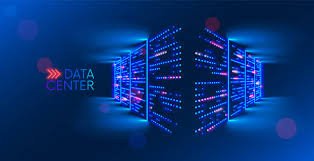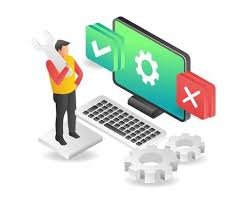
- Description
- Curriculum
- Grade
AI-Powered Data Analysis
AI-Powered Data Analysis
A Practical Guide for Beginners to Master AI Tools in Real-World Data Analysis
Table of Contents
- Introduction
- Module 1: Introduction to AI in Data Analysis
- Module 2: Data Preparation and Cleaning
- Module 3: Data Visualization and Exploration
- Module 4: Predictive Analytics with AI Tools
- Module 5: Automating Data Analysis
- Module 6: Ethics and Responsible AI
- Capstone Project
- Course Duration and Certification
- Final Thoughts
Introduction
In an age where data is generated at an unprecedented rate, the ability to analyze and derive insights from data is a crucial skill. This book serves as a practical guide for learners and professionals who want to harness the power of Artificial Intelligence (AI) for data analysis—without needing programming experience.
Throughout the course, you will become proficient in using AI-powered tools to clean, visualize, and analyze data, build predictive models, and make informed decisions. Whether you’re in finance, healthcare, marketing, or any other industry, this book will equip you with real-world skills for modern data analysis.
Module 1: Introduction to AI in Data Analysis
What is AI in Data Analysis?
Artificial Intelligence in data analysis refers to the application of intelligent algorithms that can learn from and make decisions based on data. These tools automate complex data processes, making analysis faster and more efficient.
Overview and Benefits of AI-Powered Analysis
- Faster data processing
- Enhanced accuracy and consistency
- Predictive capabilities
- Improved decision-making
Applications of AI in Data Analysis
AI is transforming industries such as:
- Finance: Fraud detection, algorithmic trading
- Healthcare: Predictive diagnostics, patient data analysis
- Marketing: Customer segmentation, sentiment analysis
Introduction to AI Tools
Some beginner-friendly, no-code or low-code tools include:
- Tableau
- RapidMiner
- DataRobot
- Google AutoML
Outcome: By the end of this module, you will understand the role and significance of AI tools in data-driven decision-making.
Module 2: Data Preparation and Cleaning
Understanding Data Types and Sources
- Structured: Data in rows and columns (e.g., Excel, SQL)
- Unstructured: Text, images, videos
- Semi-structured: JSON, XML formats
Data Cleaning Essentials
AI tools can automate:
- Handling missing values
- Identifying outliers
- Fixing inconsistencies
Data Import and Integration
Learn how to connect to various data sources:
- Excel spreadsheets
- Databases (SQL, NoSQL)
- APIs and web sources
Hands-on Practice: Use RapidMiner or DataRobot to clean a raw dataset.
Outcome: You’ll be able to prepare and clean datasets efficiently using AI tools.
Module 3: Data Visualization and Exploration
Principles of Effective Data Visualization
- Clarity and simplicity
- Choosing appropriate chart types
- Highlighting key trends and comparisons
Exploratory Data Analysis (EDA)
Use AI dashboards to:
- Detect patterns
- Uncover correlations
- Identify anomalies
Visualization Tools
- Tableau
- Power BI
- Google Data Studio
Hands-on Practice: Create an interactive dashboard in Tableau or Google Data Studio.
Outcome: Gain the ability to communicate data insights visually using AI-powered tools.
Module 4: Predictive Analytics with AI Tools
Introduction to Predictive Analytics
Predictive analytics uses historical data to forecast future events using:
- Regression models
- Classification models
Building Predictive Models with No-Code AI Tools
Use AutoML platforms to:
- Set inputs and outputs
- Train models without coding
- Automatically select best-performing algorithms
Interpreting Model Results
Understand key evaluation metrics:
- Accuracy
- Precision
- F1-Score
Hands-on Practice: Build a predictive model using Google AutoML or DataRobot.
Outcome: Learn to build, evaluate, and interpret AI-based predictive models.
Module 5: Automating Data Analysis
Automation Workflows with AI
Leverage tools like:
- Alteryx: Drag-and-drop workflows
- Zapier / Power Automate: Automate data pipelines
Real-Time Dashboards
Set up dashboards that:
- Update automatically
- Integrate with live data feeds
- Provide real-time monitoring
Hands-on Practice: Automate a data process using Alteryx or Power Automate.
Outcome: Streamline data analysis tasks using AI-powered automation workflows.
Module 6: Ethics and Responsible AI
Ethical Considerations in AI Analysis
- Data privacy and GDPR compliance
- Security concerns
- Algorithmic bias
Ensuring Fairness and Transparency
Understand how to:
- Audit for bias
- Improve interpretability of models
- Promote transparency in AI decisions
Hands-on Activity: Use RapidMiner to perform a fairness and bias audit on a dataset.
Outcome: Learn to apply ethical principles in AI-based data analysis.
Capstone Project
Description
Put everything into practice by completing an end-to-end project:
- Clean and preprocess a dataset
- Perform EDA and build visualizations
- Develop and evaluate predictive models
- Automate workflows and build a real-time dashboard
Deliverables
- A final report summarizing insights and recommendations
- An interactive dashboard demonstrating your analysis
Outcome: Apply all your skills to solve a practical, real-world data analysis problem using AI tools.
Course Duration and Certification
- Duration: 5–6 weeks (self-paced)
- Weekly Commitment: 4–6 hours
Upon successful completion of all modules and the capstone project, you will receive a Certificate of Completion, demonstrating your proficiency in AI-powered data analysis.
Final Thoughts
AI is revolutionizing how we understand and act on data. With the skills gained from this course, you are now equipped to enter the workforce with confidence—or take your current role to the next level—using cutting-edge, no-code AI tools for data analysis. Whether you’re a student, a business professional, or simply curious about AI, remember: the journey into data doesn’t require a background in coding—just curiosity and commitment.






